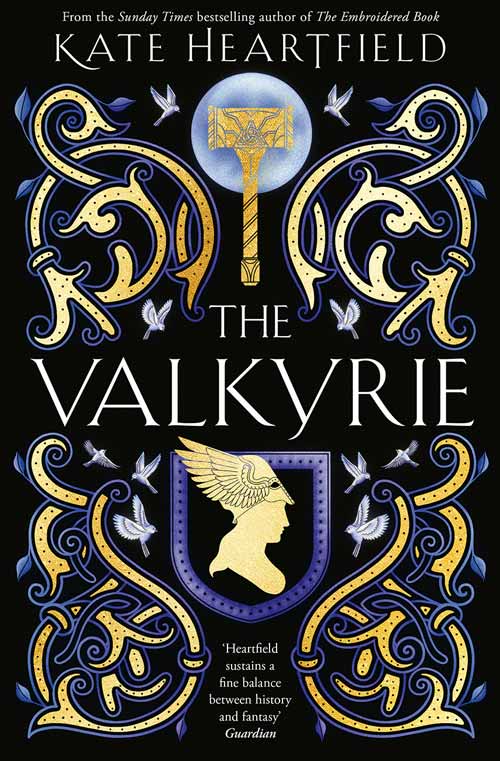Roses in Wartime: Hester Fox’s The Book of Thorns
 BY IRENE COLTHURST
BY IRENE COLTHURST
Tales in which readers can see lovers spend a period at the peak of their joint happiness are rare in historical fiction. Usually, the other more adventurous demands of the story only permit brief tender moments.
Yet in The Book of Thorns (Graydon House, 2024), Hester Fox provides one of her co-protagonists with a lovely, full blissful romantic interlude. This is an impressive feat in a book set in the run-up to the Battle of Waterloo and on the battlefield.
Those protagonists are two young women, Cornelia and Lijsbeth, who flee the constraints of their early lives. They are forced to rely on their connection to flowers to make their way as the battle draws nearer. Lijsbeth relies on her talent for floral arranging in the homes of the wealthy. Cornelia writes as a columnist revealing the secret “language” of flowers, and after becoming a camp follower of Napoleon’s army, uses her knowledge to serve as a healer. But the girls’ knowledge is insistent and profound as well as decorative and healing, and it leads them towards each other as well as the battle.
The historical fantasy stands out in other ways, as well. The story is quite innovative: deeply feminist, yet featuring a natural variety of mostly well-rounded male characters; focused on a co-protagonist who is both disabled and working class and infused with a variety of magic that marks the transitional period between the Enlightenment and the Romantic Era in which it is set.
Although what we now call disability has always been a part of the human experience, and was more prevalent in the past in some ways, the full variety of conditions and situations have not been reflected on the fictional page. The depiction of a working-class woman’s experience of mutism at any point in the past is, as far as I know, unique.
Considering this, Hester Fox notes, “For Lijsbeth, her role as a servant may have ironically spared her from some of the more inhumane treatments that a person from a wealthy family would have been subjected to.” Indeed, Lijsbeth’s employers are quite pleased with her mutism, as it highlights and reinforces her status as a servant, and allows them to both relax around her and project onto her their understanding of her and her work. At the extreme, her impairment leaves her vulnerable to assault at the hands of her first employer’s son. Unable to communicate externally with ease, Lijsbeth is almost entirely an interior character, whose pain echoes within her mind. For Fox, including a character who reflected her own early life experience of trouble with verbal expression was important.
A similar power disadvantage pushes Fox’s other co-protagonist, Cornelia, to flee the home of her uncle to escape an arranged marriage to a cruel older man. While in a certain sense, Cornelia is a more proactive character, in the end she is as much a woman in Napoleonic Europe as Lijsbeth is. The romantic interlude Cornelia enjoys comes as she is a camp follower of Napoleon’s army, and one of her relationships develops directly through the washing of laundry.

author photo by Stephanie Patalano
A central theme of Fox’s novels is, as she puts it, “the damage that the patriarchy does not just to women, but to all people”. So there is a strong current of feminism to The Book of Thorns, from the channeling of Cornelia and Lijsbeth’s hopes and fears into their relationship with flowers to their awareness of their limited life choices and the attention they must pay to propriety. Yet the male characters of the novel have received a great deal of consideration, as well, even without the use of their point of view. Speaking of Henri, a French soldier and one of Cornelia’s lovers, Fox says that “we see Henri bearing a lot of pain silently, and unable to express himself”. Cornelia helps him begin to do so, in part because of her own experience of emotional suppression. There are male villains in The Book of Thorns, but Fox shows the roots of their motivations in both human and patriarchal weakness very well.
This novel is set earlier than Fox’s other novels, and the mystery elements of the plot, such as the connection between her co-protagonists and the nature of their pasts, are subtle parts of the drama. But both her Gothic mysteries and The Book of Thorns center on women’s historical experiences and relationships with each other.
From the start, Fox had an idea that the story would have fantasy elements and that it would focus on “two sisters who shared a connection and perhaps could communicate with each other via flowers”, but the magic system developed with the story. “Flower magic seemed like a natural choice for that period, or rather, that period seemed like a natural choice for flower magic.” While ideals such as equality and rights were “in the air” in the late-Enlightenment period, they were still, Fox points out, intended for men. The magic of flowers, objects that are both natural and domestic, seemed “subversive” in that context, and she was surprised to find in the course of her research that the first manuals of interpretation of flower patterns came in the 18th and early 19th centuries, before the Victorian era with which they are more often associated.
That, in a nutshell, is the promise of The Book of Thorns: conventional, even traditional elements combined in distinctive ways to counter typical expectations. Set in a revolutionary and transitional moment yet mostly in domestic spheres, the novel achieves its depth of feeling with a quiet intensity and passion at its center.
About the contributor: Irene Colthurst is an online ESL teacher with the teacher cooperative MyCoolClass.






